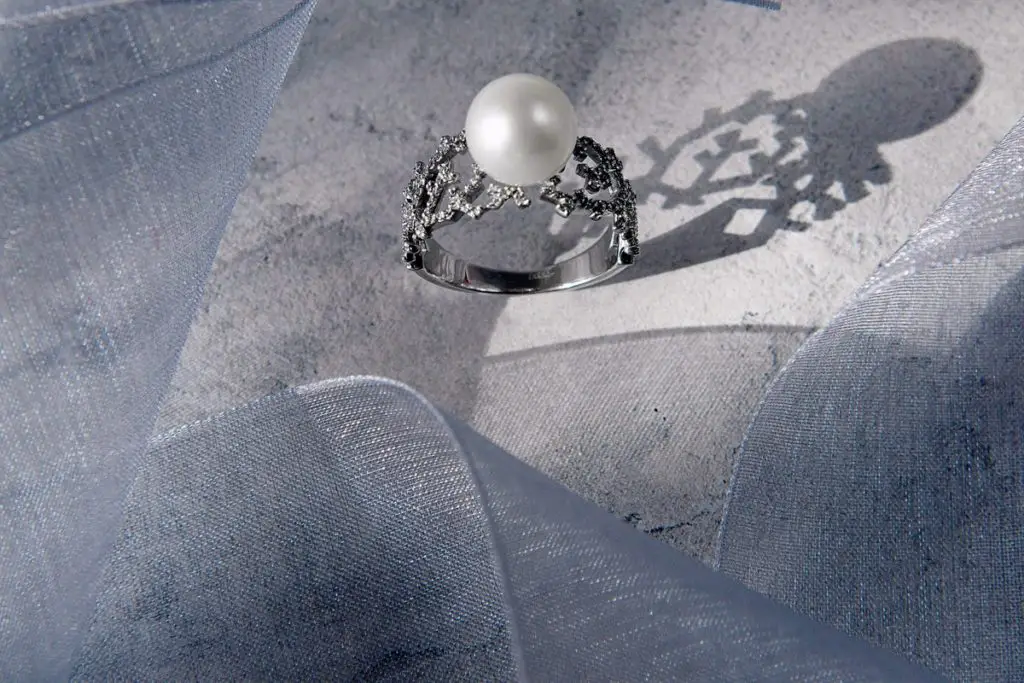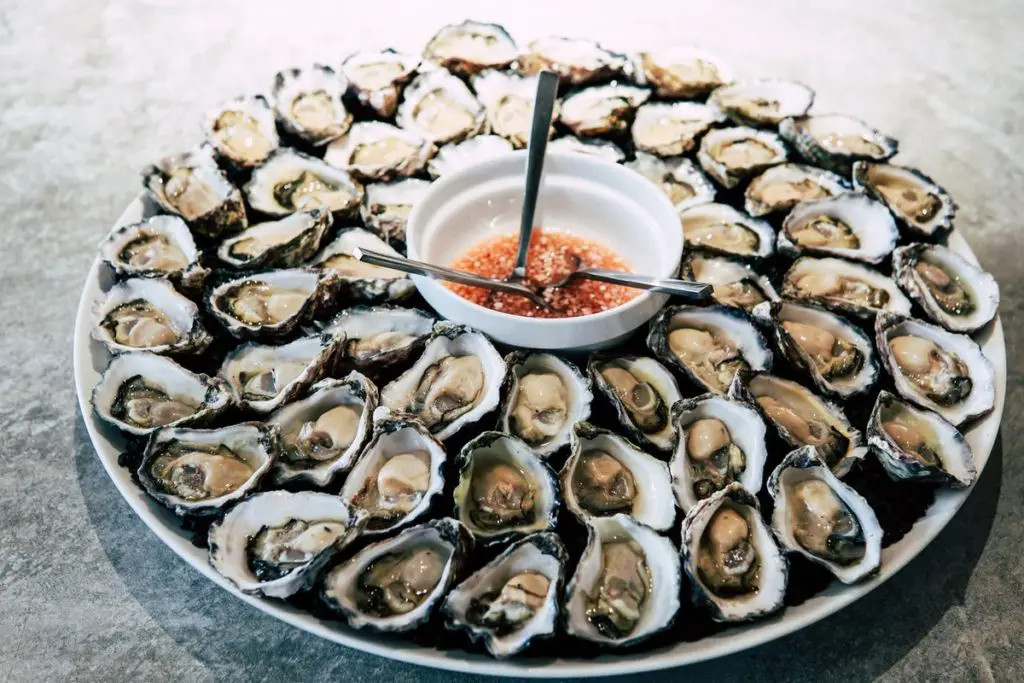Many years ago, we had no way to explain how pearls were made. Now we know that they don’t just come from oysters, but can also be formed from clams, mussels, and scallops.
However, lots of us still don’t understand why oysters make pearls in the first place. We also don’t know how oysters create these pearls inside their structure.

If you’d like to know more about why oysters make pearls, you’re in the right place!
You’ll find out more about the pearl-making process within this article, as well as whether some pearls are more valuable than others.
What Are Oysters?
Before we get into why pearls are made, we need to know more about oysters. As stated above, oysters aren’t the only source of pearls, as any type of mollusk can create a pearl.
Oysters are bivalve mollusks, like scallops, clams, and mussels. Bivalve mollusks don’t have a skeletal frame on the inside, but they have an outside shell formed from two valves.
The valves are fixed to each other with a flexible ligament. This ligament moves the shell’s two halves to open and close them. The shell opens when the oyster eats, then closes when needed.
Why Do Oysters Make Pearls?
Oysters produce pearls as a defensive reaction to an unknown matter. This occurs when a foreign substance enters the oyster’s shell and touches the mantle.
The mantle acts as a protective sheet for the oyster’s internal organs. This substance can be as harmless as sand or as damaging as a parasite.
The oyster sees the unknown matter as a threat, so the mantle secretes nacre onto it. Nacre is also the lining on the shell’s interior, also known as mother-of-pearl.
If damage to the shell occurs on the outside and the mantle is harmed in the process, it will produce nacre in the same way as it tries to repair itself.
How Are Pearls Made?
Pearls are made as nacre forms around small foreign matter that enters an oyster’s shell. Oysters do this to protect their internal organs from the unknown object.
As nacre is released in little amounts over a lengthy period, the build-up creates pearls with a smooth and shiny appearance.
Pearls can have different shapes, but they’re normally oval or round. As the pearl gets larger, the oyster can release it out of its own accord.
However, divers and fishermen often take out the pearls before the oyster can spit them out by itself.
This is how oysters make pearls, but most of the pearls sold today are cultivated, not taken from wild oysters.
How Are Cultivated Pearls Made?
Cultivated pearls are made in the same way wild pearls are. Oysters and mussels still release nacre over foreign objects to produce them.
However, cultivated pearls are made by manually placing an irritating object within the oyster. Rather than naturally, invasive methods are used to create these pearls.
Differences Between Saltwater And Freshwater Pearl Cultivation

Saltwater and freshwater cultivated pearls start in the same way. Oysters are taken from the water and placed in a dry area.
After a while, this causes the oyster to open up its shell, but only by a small amount. Pearl farmers will place a block between the oyster’s shells to stop them from closing again.
The oysters are taken to another location to try and get them to open up more, but this must be done with care. If an oyster is forced open too much, it can die.
The next steps depend on the type of pearl being created. Saltwater cultured pearls are made by placing an individual, completely spherical bead inside an oyster.
The bead’s shape increases the chance of the oyster producing a fully round pearl. This process is known as the ‘bead nucleus’ method.
As saltwater pearls are perfectly round, they are expensive. Oysters form these pearls one at a time and take many years to produce one.
This explains why saltwater pearls are farmed in small amounts, which makes them very valuable.
Freshwater cultured pearls aren’t normally produced in oysters, but mussels instead.
The way the pearls form is similar, but where saltwater pearls are made one at a time, 24 to 34 freshwater pearls can be sourced from just one mussel.
Pearl farmers achieve these incredible amounts through a different process.
Instead of the bead nucleus method, they make 24 to 32 little cuts in the mollusk’s tender tissue. The cuts make the mussels release nacre to protect their internal organs.
Instead of one pearl from one oyster, the farmer receives a greater amount of pearls that have a denser nacre content.
Despite this, freshwater cultivated pearls have a disadvantage, as they aren’t as spherical.
Rounder pearls are seen as more valuable. However, freshwater pearls are made from thicker nacre layers. They’re normally stronger and have a longer lifespan than saltwater pearls.
As freshwater cultivated pearls allow more pearls to be produced, they are more affordable and widely available compared to saltwater pearls.
How Do Oysters Create Colored Pearls?
Pearls don’t just come in shades of white, they can come in several different colors.
White pearls are considered classic and are the most popular type of pearl, but you can find pink, peach, blue, purple, and even black pearls.
While you can find pearls that have been dyed, the majority of colored pearls are made completely naturally.
The color of each pearl depends on the pigments within the mollusk it came from.
Pearl farmers attempt to guess what color pearl an oyster will create by examining the oyster’s lip. Pearls are made from the same nacre that’s within an oyster’s shell.
If their lip has a particular color, there’s a greater likelihood that the pearl will have the same shade.
For instance, black pearls are often formed by oysters with black lips. Black pearls used to be rare as it was harder to fish for black-lipped oysters in the South Pacific.
Now, the only naturally black pearls available are Tahitian pearls. These are cultivated pearls, so they are much more affordable than they used to be.
Are Some Pearls More Valuable Than Others?
Pearls come in four main types: Akoya, Tahitian, Freshwater, and South Sea. They all have different colors, features, and price points.
South Sea pearls are the most expensive as they’re bigger and take more time to form.
They’re also harder to source and have a specific lustrous shine. Freshwater pearls are the most affordable and easily found.
All of these pearls are formed by a mussel or an oyster in the same way. Despite this, the pearls all look different due to the cultivation method and type of mollusk they are sourced from.
Conclusion
Pearls are created by a buildup of nacre, a substance a mollusk produces when a foreign object enters its shell.
The oyster (or mussel) secretes nacre around the object to protect its internal organs from damage.
Most pearls aren’t sourced from wild mollusks, but cultivated instead. Saltwater pearls are made as pearl farmers manually insert a bead into each oyster, creating a perfectly round pearl.
Freshwater pearls are made by making small cuts inside each mollusk, which creates multiple pearls over time. Saltwater pearls are more expensive, but freshwater pearls last longer.
Pearls come in several different colors, though white pearls remain the most popular type sought after today.

